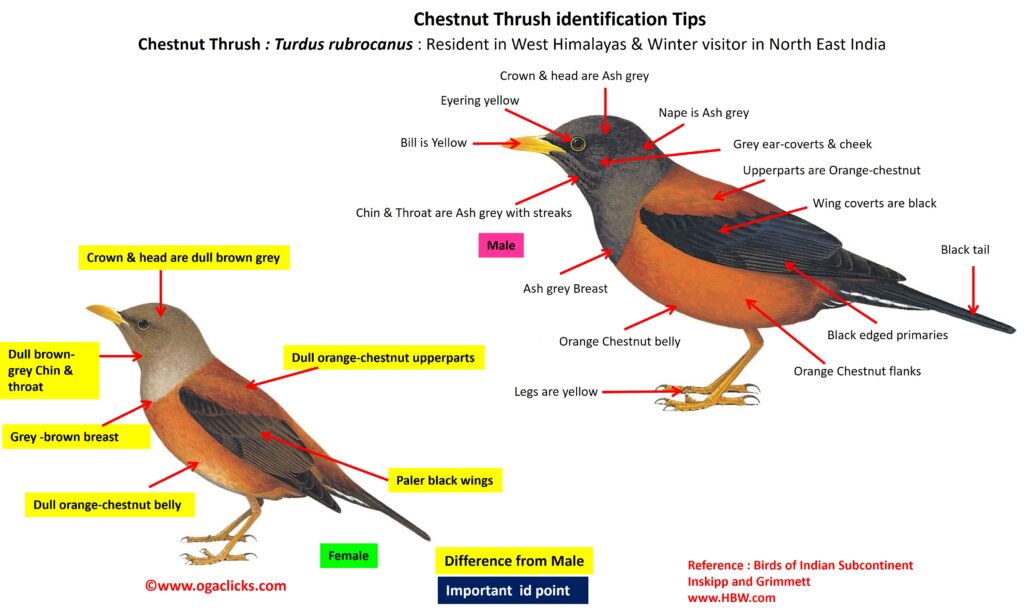
Chestnut Thrush Turdus rubrocanus
Etymology:
- Turdus : Latin word for Thrush
- Rubrocanus: Latin word ruber-red; canus – grey
Vernacular names : Hindi: Lal kastura, Kash: Wan kastur, Tibetan: Chiama gunka
Sub species :
- Nominate – Resident of Uttarakhand, Winter Visitor in North and North East of India
- r. gouldii– Winter Visitor in North East of India {Dark grey hood}
Distribution :
- Nominate – Resident of Uttarakhand, Winter Visitor in North and North East of India
- r. gouldii– Winter Visitor in North East of India
Description: Size of 25–28 cm; wt. of 85–100 g. The male has orange-chestnut body with black wings and tail, clear-cut whitish hood shading on neck side to ash-grey on head (clear-cut at nape), white-lined blackish vent. The eyering is yellow, bill and legs yellow. The female is similar but duller, paler and slightly darker-headed, with browner wings and tail. The juvenile is darker-headed, shading to dull rufous dorsally, with orange-spotted scapulars, dark wings and tail, whitish chin and throat, dark-spotted malar leading to extensively spotted buff-brown underparts. Race gouldii has dark grey hood.
Habitat: In breeding season it is found in moist conifer and mixed conifer-broadleaf evergreen forest, like deodar, fir , horse-chestnut and brown oak forests, with well-developed ground cover. It avoids inner, drier, sparser tracts with sparse understorey, keeps to shadier areas . It is found at 1500–3300 m in Himalayas, wintering lower, down to 450 m, in open woodland and orchards.
Food habits: It eats Insects and their larvae, worms, millipedes, slugs, snails and berries. It feeds on berries in winter. It forages mainly on ground in thickets and forest, in summer keeping well inside undergrowth and thickets, but often in trees. It is found frequently in small flocks and often with other thrush species in winter.
Breeding habits: They breed in Apr–Aug. The nest is a thin cup of twigs, grasses, roots and moss with or without mud support, lined with grass, roots, hair and/or pine needles, placed on ground in exposed bank under tree roots, or in hollow of tree or low cliff. They lay a clutch of 2–4 eggs.